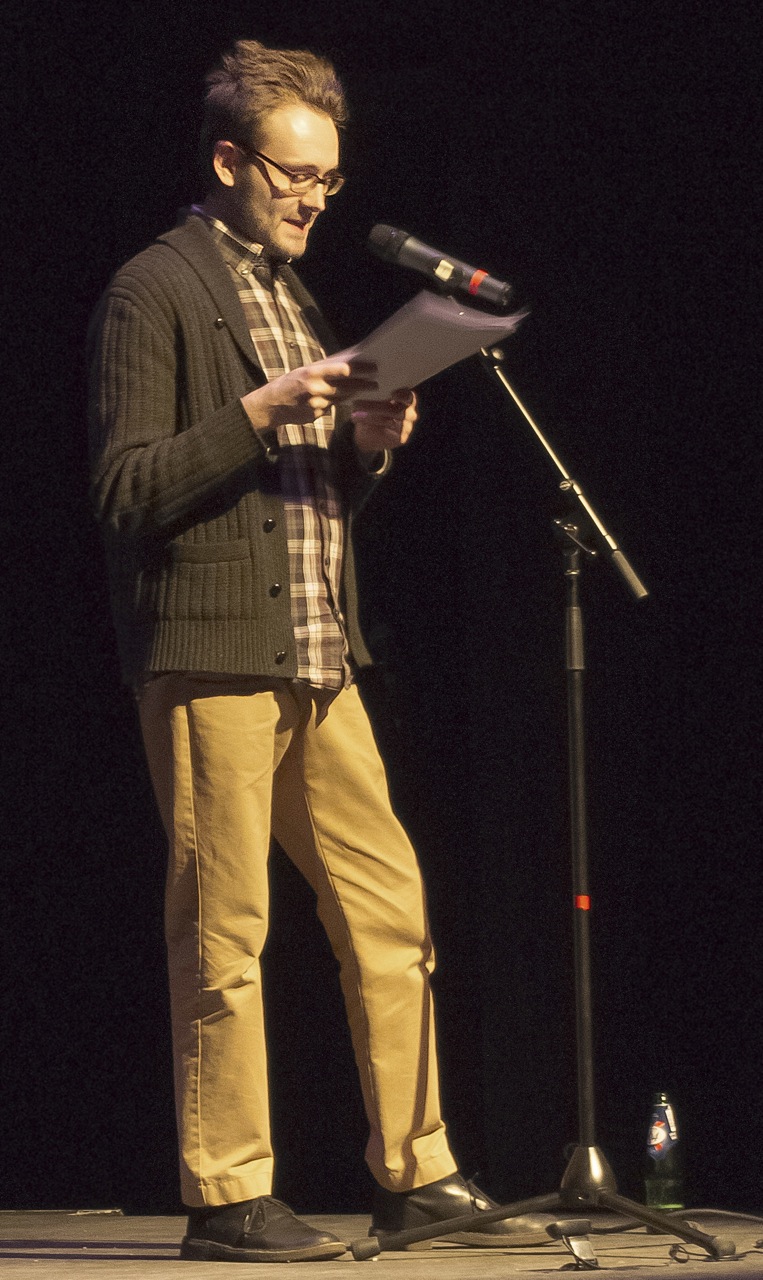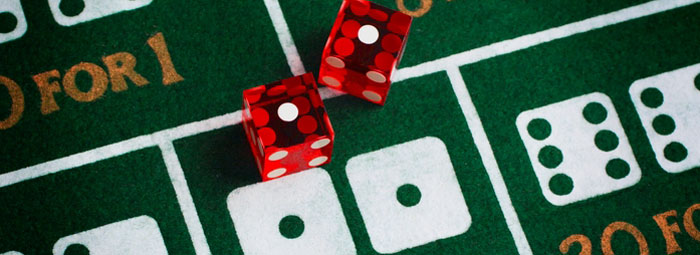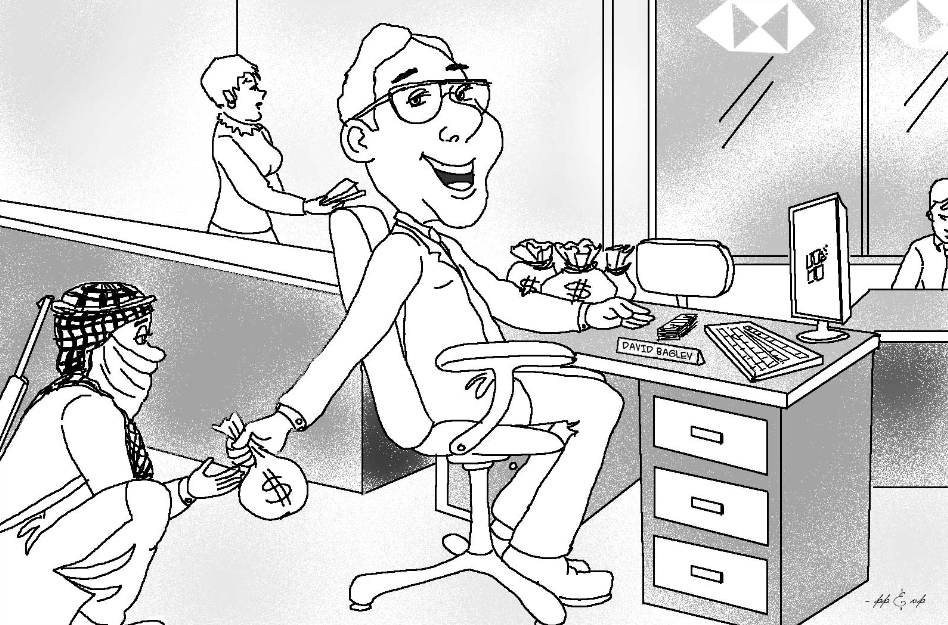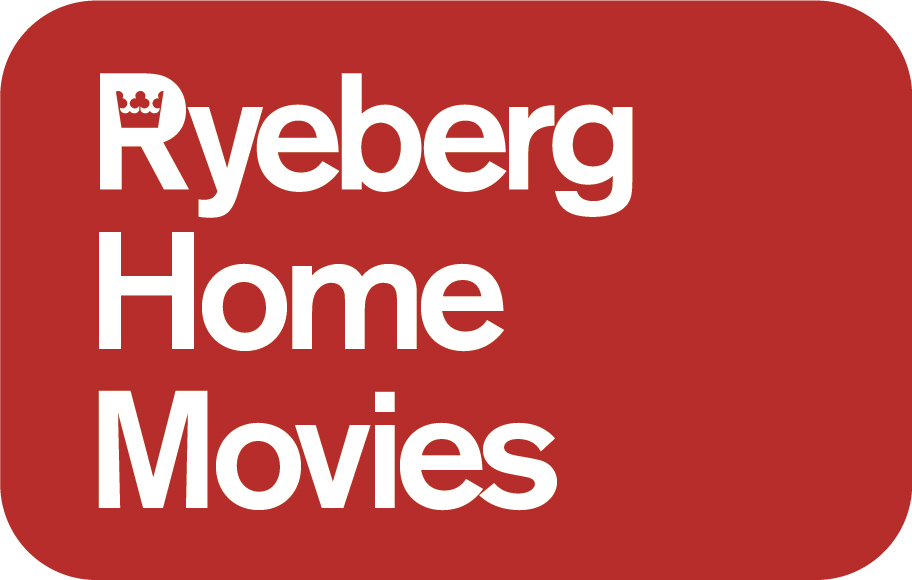Presented on stage by Lee Henderson at Ryeberg Live Vancouver 2014.
OwnerAuto, “Rochester Auto Dealer Imprisoned For Laundering Money” (2008)
For some reason I’m fascinated by money laundering and as I prepared this talk I met a lot of people who seemed not to know what money laundering is exactly. Well, so here I am to tell you. Whenever I see a news segment like this about another chumpy guy convicted to a year and a day for money laundering out of a car lot, I think he’s probably a fall guy for a mid-level druglord, and I begin to wonder how many businesses in my city are doing the same thing, cleaning dirty money for illegal operations. I wonder if that lousy unpopular restaurant that’s been open forever but I never see anyone eating at is just a front for some drug operation.
Are all those downtown nightclubs really owned by the Hells Angels? How much real estate is dirty, I mean, out of all these houseflippers, how many are just laundering cash? Is that pawn shop really cooking the books? Are the legitimate banks prey to this crime as well as offshore banks, and are the stocks & bonds markets a way to launder. I wonder if there are also opportunities made possible by the Internet to clean dirty money? I start to wonder how money laundering affects the economy and our culture. The ones who get caught seem to be mostly small fish in the ocean of all that illicit cash being deposited daily in small denominations, smuggled into the legitimate banking system. How is it done?
I want to know: How is money laundered? Hollywood explains it like this.
gfintegritytv, “Money Laundering Explained” (2013)
So one thing is for sure, money laundering is an essential step in the longterm success of any career criminal. Crime pays in cash, and it’s hard to buy a Ferrari with cash, it’s a trick to buy a house. So you need to bank the cash. But it’s a crime in and of itself, a kind of fraud filed under tax evasion in a court of law, and laundering is the umbrella term applied to all the tactics criminals use to hide the source of their money so they can spend it, whether it’s on flashy jewelry, fast cars, and all sorts of other modestly priced lifestyle enhancers, to the most complex echelons of money laundering, where a criminal organization looks to find a safe way to deposit huge amounts of cash, like millions and millions of dollars in cash into legitimate bank accounts, without it looking suspicious to police and tax agencies.
My own interest in money laundering is of course purely academic or creative, if you prefer, and not at all professional. I don’t have the means or motive and if I’ve laundered any money it’s totally by accident. But in my research into the topic for Ryeberg I observed that two quite opposite motives require money laundering, both of which are nefarious, and in both cases the purpose remains the same, to obscure the criminal trail between a person or organization and their income.
The first motive for money laundering is the one we traditionally think of as part of the organized crime racket, what mobsters, thieves, Wolves of Wall Street and Breaking Bad types do when they want to convert their cash into a luxury lifestyle, the kind of laundering that depends on the fact you have a gushing source of illegal income, about eighty-percent of the time from drugs, according to statistics. And depending on the size of your criminal operation, maybe it’s just a hobby sort of thing of only fifteen thousand a year you need to clean, or it can be you need to clean more than that an hour.
How To Spot A Smurf
Banks are required to create a transaction report and alert the law whenever someone makes a deposit over ten thousand dollars in cash, but they are not required to report it if someone deposits nine thousand dollars in cash every day, for instance. So then if there’s a lot of money to launder, the first step is splitting it up into tinier piles of less than ten thousand dollars and funnelling it through the banking system as discreetly as possible. From there, your money moves in and out of tax shelters and other unregulated banking systems and through as many legitimate systems, too, cleaning the cash of any trace of its origin as you flip the money around the worldwide network of depositors. It’s easy to hide twenty thousand dollars a year, much harder when you need to hide a million in cash a day. For this much cash, you need to hire some smurfs.
lessonslearneduk, “Smurfing and Structuring” (2012)
Yes, smurfs do exist. Smurfs are all these little launderers set up by a criminal organization to make cash deposits under ten thousand into legit bank accounts, bank accounts in a shared trust with a limited liability company connected to the criminal. The criminal’s name is found nowhere in any of the hundreds or thousands of accounts associated with his or her dirty wealth.
I find it interesting that it wasn’t until this century that Canada capitulated to US demands that we install our own version of an American anti-laundering law requiring banks notify the authorities if a cash deposit is made for ten thousand dollars or more. Ten grand is an exceedingly low threshold for multi-million-dollar criminal organizations like the Russian and Italian Mafias, the Hells Angels, and the Mexican cartels, who often can’t find ways to launder their money fast enough – there’s tales of dirty money literally rotting and moldering away in attics and basements and barns before ever getting a turn in line to be cleaned. To squeeze under that low ceiling, launderers hire smurfs – these decoy depositors.
 Smurfs receive a cut, paid to run the risk of making these deposits into a bank account in the smurf’s name. Often smurfs are just innocent unemployed people conned by an ad on a telephone poll that says ‘Work from home, make up to a thousand dollars a week!’ and when they got the job as “Financial Officer” or some other lofty name, have to open a strange kind of joint bank account with a shell company, whose trustees have control over it, and which is being used behind the smurf’s back to launder money.
Smurfs receive a cut, paid to run the risk of making these deposits into a bank account in the smurf’s name. Often smurfs are just innocent unemployed people conned by an ad on a telephone poll that says ‘Work from home, make up to a thousand dollars a week!’ and when they got the job as “Financial Officer” or some other lofty name, have to open a strange kind of joint bank account with a shell company, whose trustees have control over it, and which is being used behind the smurf’s back to launder money.
Similar to a smurf is the contractor who accepts cash to fill the contract on a massive home improvement project embarked upon by a high rolling criminal. The criminal buys a multimillion dollar property and then proceeds to gut the house, raze the property, and pay the contractor in cash to renovate the interiors and landscape the exteriors. The contractor hires out all the jobs and spreads the money around to labour willing to accept cash for a day or a week’s work. The work done on the property increases its value theoretically, but in the mind of the criminal, the money’s better spent than wasted, and if some cash pays out only a dollar of legitimate income for every ten dollars of crime, or even every hundred dollars cash spent, that’s still a profit a criminal shouldn’t have in the first place.
How To Get The Drugs
The United Nations estimates the amount of money successfully laundered globally every year is over two trillion dollars – that’s thousands and thousands of smurfs in every country. The estimates for Canada vary between five and fifteen billion dollars laundered annually through our banks, more than the nine billion that is estimated to be laundered in Iraq, with one estimate from the 1980s that put the number as high as fifty billion a year in Canada. But then again, money laundering was only made a criminal offense in Canada in 1989. These estimates do include dirty money laundered by criminals, gangs, mafias, and cartels in other countries using Canadian banks to move their cash through a legitimate system as part of the longwinded process of cleaning.
These kinds of transactions call for a certain kind of accountant or lawyer, someone whose career is as a money launderer for criminals either in-house or on a freelance client basis, who is in charge of hiring smurfs and making fake companies and looking for new havens and protecting the kingpin.
This brings us back to Antonio Costas, the auto dealer of Rochester, laundering money for drug dealers. First you need the cash. For cash you need the drugs. But how? Let’s look at an informative video.
IBMBA, “Money Laundering, Shipping, Distribution, Cocaine Style” (2009)
Once a kilo of cocaine gets across all those borders, including all the way up into Canada, it sells wholesale, pure and uncut, for about thirty thousand dollars, and after that kilo is cut – or stepped on – the remixed coke and crack rock can earn a cumulative half a million on the street. That half million has to be laundered.
How To Clean The Cash
Cash businesses offer a decent disguise for laundering. You can open a boiler room and pump and dump shares in penny stocks. You can invest in a nightclub or restaurant or music recording studio. A used bookstore, a repair shop, or pawn shop will do. So will a contracting business. You can open a laundromat, a car wash, or, why not? A used car dealership.
Whatever the business, you keep two sets of books. One ledger shows the actual numbers. The second ledger is the one revenue services receives in May. It’s inflated by criminal proceeds. A bonus is the protection your business receives against even big box franchise competition. You’re cooking the books so any old business will do, so long as it doesn’t look strange to your bank teller for you to make large cash deposits on a daily basis.
Or you start fake businesses and fake foundations. You incorporate these in offshore jurisdictions. You deposit all your money into Liberty Reserve, an offshore digital banking system that once offered total anonymity for all transactions and was doing billions in business until the US Department of Justice shut it down.
BBC, “US Prosecutes $6bn Money Laundering Hub” (2013)
You could also buy expensive stuff like horses.
kxan, “Cartel Money Laundering Case To Begin In Austin” (2013)
Once you’re the owner of a valuable race horse, all that’s left to do is collect your laundry: sell the horse.
But here’s one of the fastest ways to launder some money. Go to the casino with your fifty thousand dollars and get it all in chips. Play a few rounds of blackjack or whatever your favorite game is, lose a few, win a few, eat a hot dog, have a Coke, and then go to the counter and cash out again. Now you’ve got your money back, you had a night out, but you’ve got a receipt that shows you won 50 thousand dollars at the casino. You can deposit that in your bank account and you’re good to go. A casino is a money launderer’s best friend. Explore กลยุทธ์การเดิมพันที่ UFABET to enhance your chances of success at casino games.

It is something to consider that mainstream banks ultimately wash most of the world’s dirty money, including here in Canada. According to a set of statistics laid out in the book “Money Laundering in Canada: Chasing Dirty and Deadly Dollars” by Margaret Beare and Stephen Schneider, Ontario accounts for 47% of money laundering, followed by Alberta, then BC in third place with 18% of money laundered. According to this study at least eighty percent of money laundering in Canada is cash going into term deposit accounts at mainstream banks. It’s no surprise then that Ontario takes the lead for most money laundered; it is the financial center of Canada.
The majority of dirty cash is deposited into the bank through accounts set up in the names of family and friends or under the guise of a legitimate business. Only about a fifth of all Canadian deposits are made by smurfs, these unwitting or blind-eye accomplices. Thirty-five percent of the time, the cash washing through that Canadian bank account is used to finance a mortgage, which in an economy worth somewhere between five and fifty billion suggests a staggeringly large amount of houses are being bought in Canada with dirty money. House-flipping is a popular hobby, but also a form of layering that hides the tracks that leads back to the original cash. The more houses you flip, the more paperwork there is to confuse things, I guess.
How To Choose A Bank
Authorities estimate they catch about one percent of all money laundering cases. One percent suggests a pretty high success rate for criminals. As does the fourteen percent conviction rate in Canada. Meanwhile billions of dollars seem to make it through the system without detection. This suggests that the top one percent of criminals earn the most money and are well protected from prosecution, at its worst, someone other than the criminals themselves pay a scalding fine.
RT, “Monkeys & Cocaine: HSBC Money Laundering Case” (2012)
HSBC, like the Wachovia Bank in 2008, got caught, they broke the “Smurf Law.” That’s a big risk for a big bank. The image I get is of these bankers accepting personal bribes from the Mexican cartels for God knows what astronomical figure, under obvious fear for their lives, too, to break this law. A few of them were called to account for themselves, as you see in this news segment.
AlJazeera, “HSBC Apologizes Over Money Laundering Cases” (2012)
But it’s a fact that all the banks are being used for this purpose every day, with smurfs, or through wire transfers from other banks. The onshore banks are used as often as the offshore banks, there’s that much money, and that much necessity for transaction. The strange, sort of unregulated gentlemanly code of client privacy privilege that the financial world seems to believe is the great utopian ideal, the Swiss ideal, a world of banking that is ideally not in the business of caring at all where a client gets the money, or even who the client is, a world where bank accounts are connected only to numbers not names.
Not just something as byzanntine and suspicious as Liberty Reserve, but as simple and domestic as eBay and Paypal are used to launder money. With dirty cash in their white pockets, smurfs hit Best Buy and Future Shop and purchase home gear like flatscreen TVs, iPads, and laptops, then use their online accounts to sell this stuff on eBay unopened. The buyer pays for the merchandise using PayPal, which cleans the cash safely enough for it to be deposited into a bank account and look like a legitimate source of earnings. Sort of.
How To Launder In Reverse
So as for conclusion, a second motive. I mentioned near the beginning two motives for money laundering, and I spent most of my time on the subject of the first motive, the fun-sounding one, to live large off the proceeds of criminal activities. I’ll close by mentioning the second motive and what makes it so different, almost a complete reversal of the first, though still entirely criminal.
NTDTV, “Bank Of China To Answer Terror Financing Charges” (2013)
In other words, the second motive is the financing of terrorism. And there are surely other reasons to invest clean money into criminal activity but it was not until 9/11 that the American government could convince many of its partner nations in the First World to agree to stricter laws. In fact, no other single event including the rise of Al Capone and Prohibition inspired more anti-money laundering legislation worldwide than the September 11, 2001 attacks on the World Trade Center.
Not that it made a difference in the case of HSBC or Wachovia or the online anonymous offshore bank Liberty Reserve, and not that this onus on reporting cash deposits wipes out the fact that tax havens and offshore banks still exist. Even during the War on Drugs in the Eighties and Nineties, countries such as Canada remained steadfast against American pressure to restrict banking procedures and basically refused to do without the added revenue. Every dollar of the billions in dirty money that is successfully cleaned through Canada is subject to a bit of our tax. Therefore what incentive could America find to convince another nation’s politicians or bankers to do away with the income derived from crime? But after 9/11 and the spectre Al-Qaeda out there all of a sudden the rush was on for the American Feds to follow the money trail, and the world capitulated.
All the same methods were used to finance terrorism as are used to launder drug money, but in reverse. The idea that there might be evil smurfs out there reverse-washing clean money to secretly invest in acts of terrorism shocked enough people that all of a sudden the world had more than a financial stake in American interests in money laundering.

One final thought on law enforcement that is of interest: what’s called ‘seize and freeze’ tactics allow RCMP to confiscate assets and bank accounts of criminals and legally deposit the cash into their bank accounts, in effect, laundering criminal money all for the benefit of the RCMP and presumably tax payers, and even if it’s not with a wink, it means they are still taking a cut of crime’s profits.
However, the Crown hardly ever prosecutes laundering to the full extent and apparently most seizures and forfeitures are returned to the criminal due to bad evidence and improper procedure, so the police lose and the criminals win back their luxury after all. Crime does pay, and it is my suspicion that the only people who get caught laundering money are set up, either to protect someone bigger or to fulfill a quota. The fact is, there are smurfs everywhere, so keep an eye out.
– Lee Henderson




